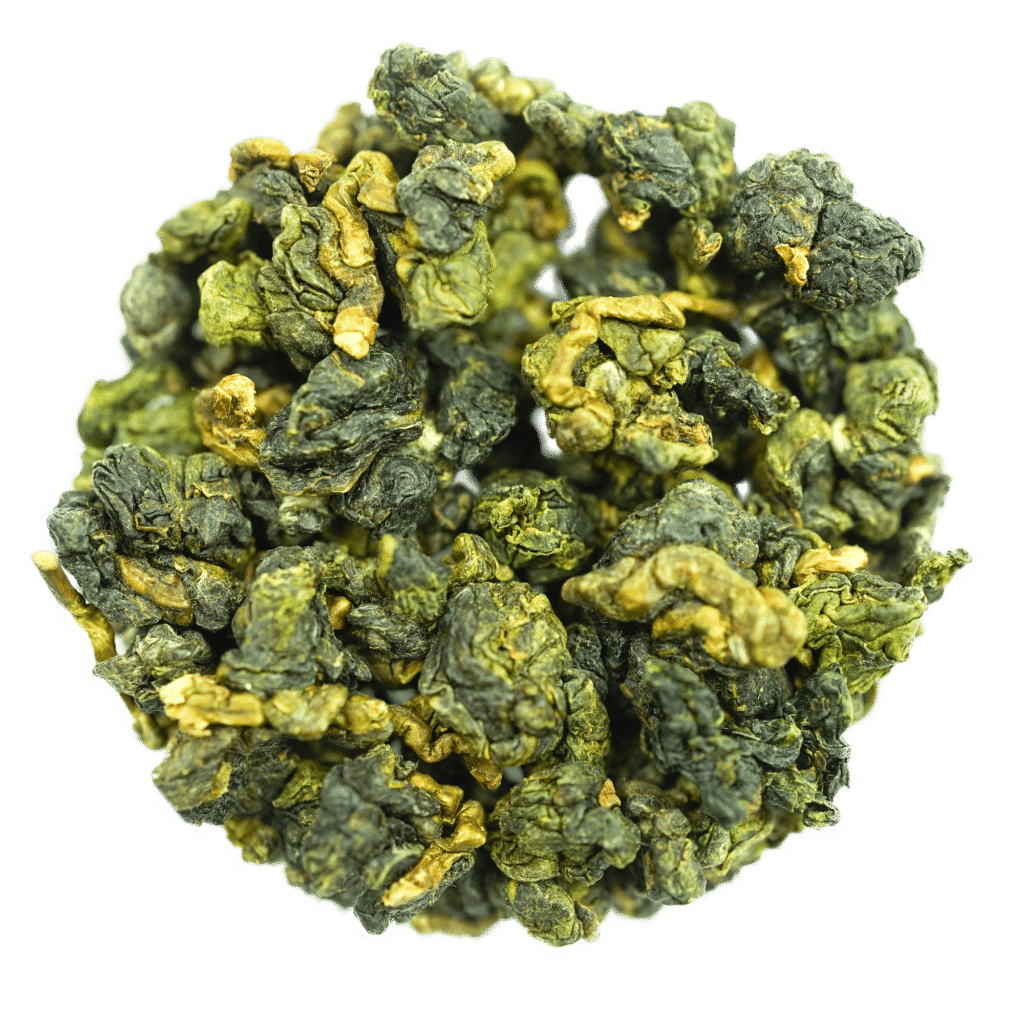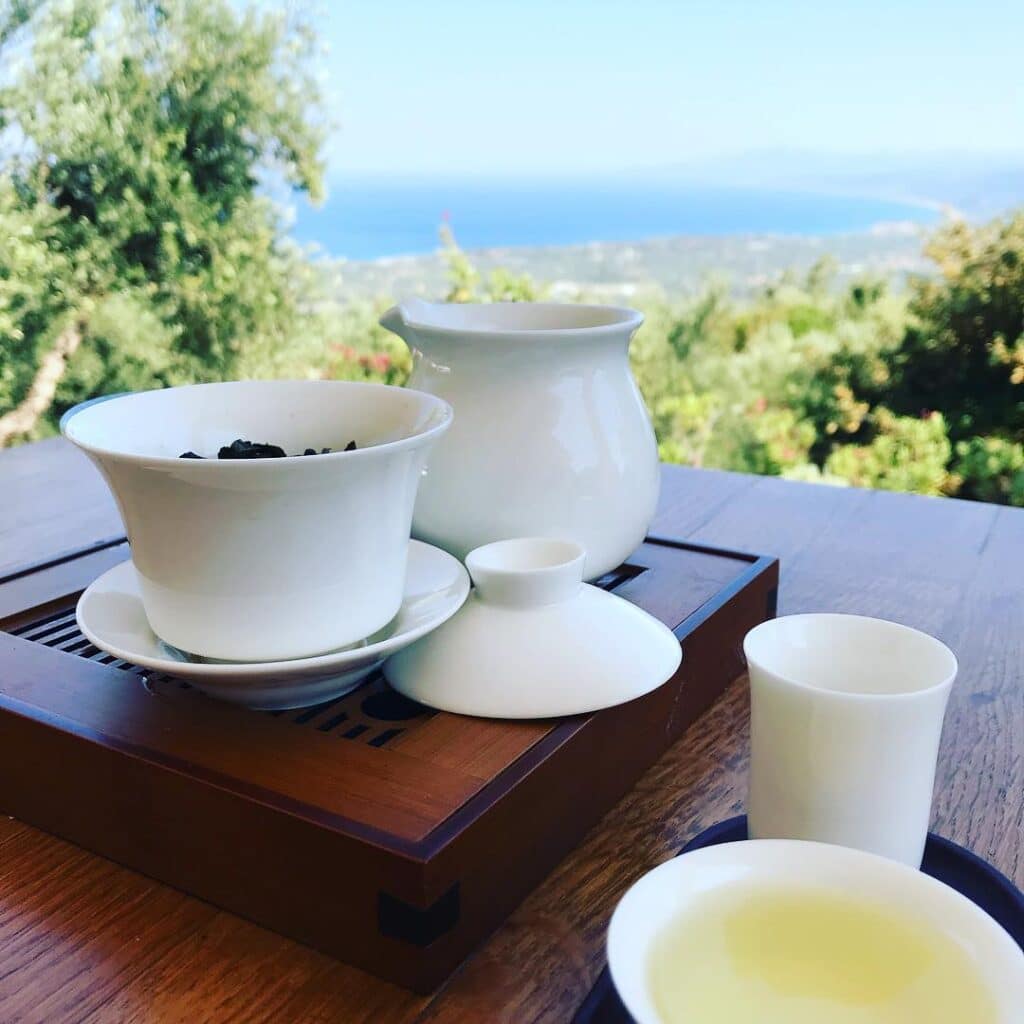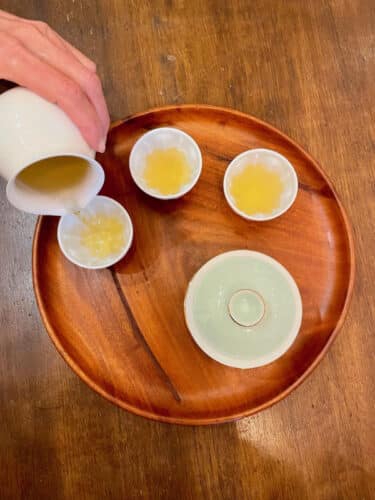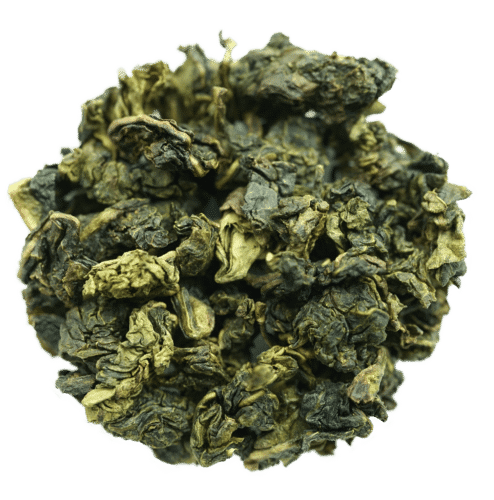There are two oolong teas on the market known as milk, or milky oolong:
The original milk oolong is a lightly oxidized, ball style oolong with a floral scent and a sweet, buttery taste. It comes from Taiwan and is made with leaves from a specific cultivated variation of the tea plant named Jin Xuan. This cultivar was created in 1981 to help tea farmers increase their yields and when produced as a lightly oxidized, rolled oolong is known for having a distinct silky, smooth, creamy, buttery flavour that reminds many drinkers of milk. Milk oolong from Taiwan is completely natural and contains neither flavourings nor lactose.


Whilst the character of a Taiwanese milk oolong will always be similar, the taste will vary depending on the terroir in which the tea has grown.
We are lucky enough to have two high grown milk oolong teas from Taiwan in our selection.
One of our favourite milk (Jin Xuan) oolong teas comes from plants that have grown at 1200 meters above sea level on Mount Ali Shan. The dry leaves smell of spring flowers and are tightly rolled. The infusion is a bright, pale yellow colour and the taste is at first sweet and creamy, with subsequent infusions developing zesty, tropical fruit notes and a lingering sweetness. The brewed leaves show traces of being bug-bitten, which when a tea has not got organic certification is always a good sign as it shows no pesticides were used.
Another of our favourite high grown oolongs is Katie Yen’s Milky Oolong. Katie is one of the few certified organic tea growers in Taiwan. All of her teas are excellent and her Milky Oolong, made from the first plucked leaves of the year from plants grown in her highest altitude garden (1400m above sea level), is no exception.
Taiwanese milk oolong is a wonderful tea to prepare and enjoy gong fu cha style.

Chinese milk oolongs, which are widely distributed in Europe and the USA, and other milky oolongs, which are actually plain oolong teas from China which has been flavoured by tea wholesalers in Germany are not as delicate and subtle as milk oolong from Taiwan. Extremely popular, they are flavour packed from the first sip, and provide instant satisfaction for those with a craving for something sweet.
To keep our customers happy we sell both types of milk/milky oolong and while we have a clear preference for one, we can vouch for the quality of both.

While Oscar Wilde is often quoted as having said that the sincerest form of flattery is imitation. The rest of his remark, which goes on to say that the flattery is a form of mediocrity paying tribute to greatness, is often left unsaid. Need we say more? We are very much in favour of enjoying tea in its natural state. But enjoying tea is a personal experience, and each of us, even if we are drinking exactly the same tea made in exactly the same way, experiences it differently. We suggest you explore both types of milky oolong, and enjoy exploring the different tea drinking experiences.
* Prices inclusive of VAT. Prices do not include shipping costs
EU Organic Certification through ABCert (DE-ÖKO-006)
| Cookie | Duration | Description |
|---|---|---|
| __stripe_mid | 1 year | This cookie is used by our payment provider Stripe to process payments. |
| __stripe_sid | 30 minutes | This cookie is used by our payment provider Stripe to process payments. |
| cookielawinfo-checkbox-analytics | 1 year | The cookies is used to store the user consent for the cookies in the category “Analytics”. |
| cookielawinfo-checkbox-necessary | 1 year | The cookies is used to store the user consent for the cookies in the category “Necessary“. |
| CookieLawInfoConsent | 1 year | This cookie is used to record the default button state of the corresponding category. |
| viewed_cookie_policy | 1 year | The cookie is used to store whether or not user has consented to the use of cookies. |
| woocommerce_cart_hash | session | This cookies is used to determine when cart contents/data changes. |
| woocommerce_items_in_cart | session | This cookie is used to determine when cart contents/data changes. |
| wp_woocommerce_session_* | 2 days | This cookie is used to find the cart data in the database for each customer. |
| Cookie | Duration | Description |
|---|---|---|
| _ga | 2 years | This cookie is used by Google Analytics to calculate visitor, session and campaign data for the sites analytics reports. |
| _ga_* | 2 years | This cookie is used by Google Analytics to calculate visitor, session and campaign data for the sites analytics reports. |
Call us during opening hours on + 49 (0) 711 518 74 006 or email us using the form below. We will get back to you as soon as we can.